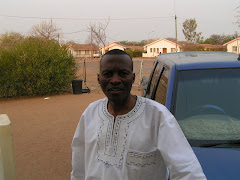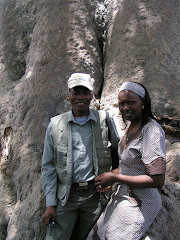Here’s a more detailed definition on child trafficking, for use by service providers.
Clarification is also made on what 'exploitation' means in the context of child trafficking...
Where a child is exploited in the broader sense (such as doing hazardous work, forced to miss school, working very long hours) this is not enough to define it as child trafficking, even if this work is linked to movement of the child. This relates rather to migration-related and exploitative forms of child labor, which is also an area needing priority attention.
Short definition: use this definition when it is not appropriate to define the term fully (e.g. because of available space) –A child has been trafficked if there was a transaction involving provision of the services of a child, or where the child has moved from elsewhere, whether by force or free will, and as a result is now being exploited.
Exploitation in this context means work in slave-like conditions (indicating that the child does not have control on whether to work) or the child being subjected to commercial sexual exploitation. A transaction is where someone receives payments or benefits to agree to another person being exploited.
The full definition or description of child trafficking follows below. Please use this definition at least in publications where trafficking is the focus or very relevant (except, possibly, in executive summaries).
Under international law, trafficking is a crime involving the movement of people and their exploitation. The movement may be voluntary or coerced; the relocation may be across borders or within a country.
Exploitation in this context means work in slave-like conditions or the child being subjected to commercial sexual exploitation. Exploitation can occur at the beginning, middle or end of the trafficking process, or at several points.
The fact is that, where there is movement resulting in exploitation, then trafficking has occurred. And those who have contributed to it – recruiters, middlemen, document providers, transporters, corrupt officials, employers and exploiters, service-providers – are traffickers.
ILO Convention No. 182 on the Worst Forms of Child Labor classifies trafficking among “forms of slavery or practices similar to slavery” and hence a worst form of child labor to be eliminated as a matter of urgency. In practice, most organizations working to combat trafficking use the definition contained in the United Nations Protocol to Prevent, Suppress and Punish Trafficking in Persons, especially Women and Children, supplementing the United Nations Convention against Trans-national Organized Crime (known as the Palermo Protocol).
The Palermo Protocol defines trafficking as: “…the recruitment, transportation, transfer, harboring or receipt of persons, by means of the threat or use of force or other forms of coercion, of abduction, of fraud, of deception, of the abuse of power or of position of vulnerability or of the giving or receiving of payments or benefits to achieve the consent of a person having control over another person, for the purpose of exploitation.” Exploitation in this context means commercial sexual exploitation or work in slave-like conditions.
In the case of children (i.e. under 18 years of age) the Protocol further specifies, “the recruitment, transportation, transfer, harboring or receipt of a child for the purpose of exploitation shall be considered ‘trafficking in persons’ even if this does not involve any of the means set forth in the definition”.
In short, child trafficking in the context of child labor can be defined as follows: A child has been trafficked if there was a transaction involving provision of the services of a child, or where the child has moved from elsewhere, whether by force or free will, and as a result is now being exploited.
Exploitation in this context means work in slave-like conditions (thus indicating that the child does not have control on whether to work) or the child being subjected to commercial sexual exploitation. A transaction is where someone receives payments or benefits to agree to another person being exploited.
A child has been trafficked if the child has been moved within a country, or across borders, whe¬ther by force or not, with the purpose of labour exploitation. This is the case where the child's movement has rendered the child more vulnerable, facilitating the labour exploitation.
Labour exploitation means work which, by its nature or the circumstances in which it is carried out, is likely to harm the health, safety or morals of children. At its worst, it would include working in slave-like conditions or the child being subjected to commercial sexual exploitation or another worst form of child labour.
Subscribe to:
Post Comments (Atom)











No comments:
Post a Comment